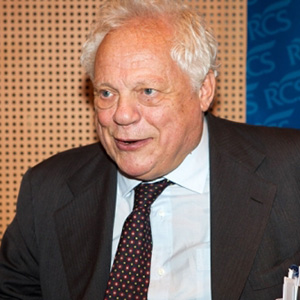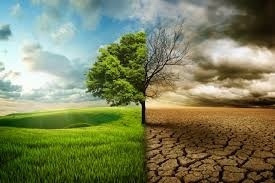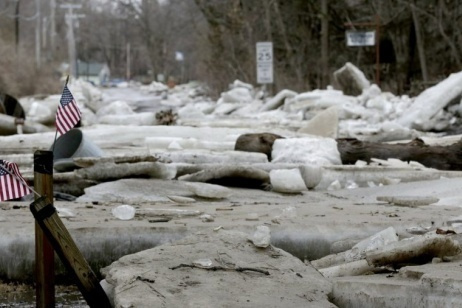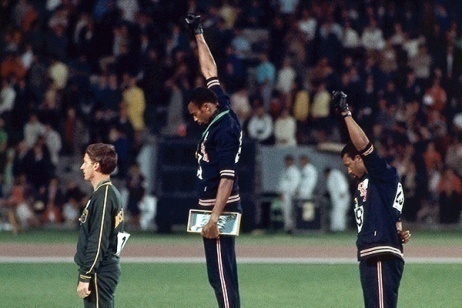
Charter for the environment
The responsibility of a fragile planet. Virtuous reflections and practices to understand and deal with the climate emergency
As the twenty-first century progresses, it is becoming increasingly clear that crucial issues of our age cannot be studied and understood separately, as they are systemic, interconnected and often interdependent. The relevant solutions, therefore, require a dramatic change in perception: today we need more than ever to learn to shoulder global responsibility.
Every day we see the effects of global warming and we risk becoming the generation that will go down in history for not preventing major catastrophes.
The impending climate emergency, however, may paradoxically push us all to rediscover the sense of belonging to the same nature. What is the point in being divided before a danger for all?
In a globalized and interconnected world, those who think that everyone can save themselves on their own, that every country can pursue their own interests by being separated from the others, not only choose the path of irrelevance, but also risk being carried away by fear and engaging in a fratricidal struggle for survival that can lead to dangerous tensions up to the war of all against all.
Overcoming indifference
Once again, the first step is overcoming indifference.
Global warming, that is the increase in the planet’s temperature provoked by increasing amounts of carbon dioxide, methane and other greenhouse gases trapped in the atmosphere, has been known for decades, as are its causes: human activities, including use of fossil fuels, deforestation or intensive livestock farming, the main sources of greenhouse gas emissions.
An unheard witness to this issue, as Jan Karski was during Shoah, is American scientist Wallace Broecker, the “pioneer” of climate change. Back in 1975, despite global temperature was slightly decreasing on the planet, Broecker realized that it would increase in the following 40 years “well beyond the limits of the last thousand years”, due to the increase in CO2 concentration in the atmosphere. He understood, thoroughly and well in advance, what we now know as global warming, and the consequences it would have on the planet. However, at that time, few were ready to listen.
Today, the issue of climate change has become increasingly important in public debate, but it is still crucial to overcome the disconnection of scientists, intellectuals, politicians and citizens, as it is only by building together the path of systemic change that we can accelerate its effects.
Communication, language, the link between human beings and nature
In this sense, it is crucial to understand “how” to talk about the environment and climate change.
It is first of all an issue of communication. This topic has indeed been often limited to natural sciences, repeating alarming data that predicted a catastrophic future. Such way of communicating, on the one hand, distances the public, which risks falling into a “saturation effect”, consisting of tiredness and indifference. On the other hand, instead, it risks leading to a sort of “religion of pessimism”, a deification of nature that leaves no room for forgiveness, hope and the human ability to act and change the situation. Such concept of “Mother Gea” mat indeed almost suggest the idea of a planet that can take care of itself, removing human responsibility for - past and present – actions. Nature must not be depicted as a myth, but the relationship must be re-experienced with nature itself and other human beings, rediscovering our fragility and shared humanity. If the term “nature” did not convey the idea of commonality with living beings, indeed, we would end up not feeling part of the natural process, but outside (and often above) it.
Today, instead, we need to accept and affirm, first of all, the bond between human beings and the planet, to understand the place of human beings within nature and to be aware of current reality and the role human behaviour has had and will have in it. This is why, when communicating, we must avoid conveying the idea that it is too late, that there is no more time to act and find a solution.
It is no longer sufficient to declare a state of alert. Information must be supported by validated and easily understandable scientific content. Emergency exists, it is real, and it is crucial for individuals to be aware of it: this is why it is pivotal to focus communication on reliable data and projections, to highlight the community and on social nature of human beings, to worry about global issues, but always looking at our “garden” and at our time.
Environmental risks, but not only
This is the only possible way to raise awareness on climate change and its global impact. By doing so, the issue is “subtracted” from mere science and becomes part of a social, global context, where each one of us can take responsibility. While on the one hand it is impossible not to talk about issues such as melting of continental glaciers, rise in sea level and the relevant erosion of the coastline, increase in coastal floods and penetration of saline water into the soil, and intensification of extreme weather events, on the other, we need to consider something extremely important, that is the impact on inequalities and human rights.
Climate change will not affect everyone the same way. It is easy to imagine how, in vulnerable areas of the world, decrease in water and food resources compels populations to divide a smaller amount, causing new conflicts or exacerbating pre-existing ones. If all this is combined with political instability and with economies that are already at the limits of sustainability, it is not hard to imagine significant consequences, such as increasing poverty and new migratory waves.
ITherefore, in a new perspective for protection of human rights, defence of rights can no longer be separated from climate change. The new humanism necessarily involves protection of the environment: perhaps the time has come for international institutions to formally recognize the right to healthy environment.\.
Managing the inevitable, avoiding the unmanageable
Faced with all this, it is possible to try and mitigate the effects of climate change, without forgetting adaptation strategies.
Climatologist Filippo Giorgi describes this condition as “managing the inevitable and avoiding the unmanageable”. We should always keep in mind that global warming cannot stop suddenly, at least in the next few decades. It will continue: if climate changes, nature adapts, and so must society. The point is, and will be, to contain such changes within limits that do not endanger sustainable development - that is, within the so-called danger threshold.
Many countries in the world are developing strategies to adapt to climate change, including construction of taller coastal dams in the Netherlands to face rise in sea level. Today it is unthinkable for socio-economic and territorial planning policies not to take into consideration the issue of climate change. But in order not to reach the danger threshold, identified in Paris agreement as two degrees above pre-industrial temperatures, we need policies of mitigation, that is decrease in greenhouse gas emissions. Mitigation is therefore linked mainly to energy technologies and policies aimed at de-carbonizing the energy system. Adaptation, to manage inevitable climatic effects, and mitigation, to prevent such changes from being so severe that they cannot be managed sustainably, must however be implemented in tandem, and urgently, to effectively respond to global warming.
Our species is largely resilient. Greater awareness of the issue will lead to finding a solution, which is possible and does not require epochal changes, as it is a matter of using resources available more rationally and fairly.
Innovation plays a crucial role in this.
The role of innovation and companies
Today conditions exist for human beings to rediscover a path of sharing and to make use of the progress of science to improve collective well-being. Foundations have already been laid to develop renewable technologies, switch to zero emissions, live in green buildings, implement new models of industrial production. Individuals can take measures to raise awareness and disseminate good consumer practices, but also companies are crucial in this critical moment and will need to switch to a more environmentally conscious model.
Production must indeed necessarily adapt to new environmental scenarios and mitigate the impact on the territory: agriculture is needed that reduces soil use while maintaining high yield and investments must be made in crops that are suitable for the area where they are grown. Waste must then be smartly reused, which ensured a circular process.
Energy-wise, it is crucial to decrease waste, which today accounts to 60% of energy produced. It is therefore essential to focus on energy efficiency and renewable sources, which today could already meet the global need of energy, if we overcame the obstacle of energy distribution.
Let us consider water, such a crucial resource that it often becomes a cause of divisions and conflicts. Solutions for integrated and circular water management already exist: avoid wasting it and limit its dispersion, adopt technologies that maximize water efficiency and draw value from waste. It should also be noted that most water is used in farming and livestock and approximately 30% of food produced in the world is wasted (and therefore, presumably, 20% of water used). We basically make populations thirsty to produce food resources that we then throw away.
To respond to all this, however, it would be necessary to regulate the logic of production and profit in the name of environmental protection leading, theoretically and practically, to sustainable and widespread development, aimed at reducing inequalities and therefore increasing resilience of populations. This also includes stopping issues such as land grabbing and unlimited land use.
The push towards green economy is a choice of rationality, which has perhaps become unstoppable and certainly more cost-effective than carbon economy.
In any case, it is important to enhance environmental culture, also in the technological and industrial field: environmental protection is often seen as an obstacle to development, when instead it would be necessary to understand that having a better environment means improving our conditions.
Towards an insurance for climate
What therefore hinders governments in achieving agreements, plans and shared strategies, as it happened for the hole in the ozone layer?
One issue was the lack of risk perception. Changes such as climate change are relatively slow compared to the evolution of society and human life: saying that temperatures could rise by 5 degrees by 2100 is not immediately perceived as a risk for human beings in 2019. We are not used to thinking in the long term, but the pace of what is happening now, and this could happen in the next few decades, is something that the planet has probably never seen in the last million years, and may lead to a very different world than the one we live in today.
At political level, despite various attempts to reach a climate agreement, no common strategy has been achieved yet. If we look at those who produce more emissions, we can already understand why. At the top of the ranking appear China, the United States, Europe, Russia and India: on the one hand industrialized countries, which have been so far the main producers of greenhouse gases (and therefore the main cause of global warming), on the other hand emerging economies, which claim their right to development.
We live in a sort of “prisoner’s dilemma”, as every State is encouraged to betray its commitments, even though collaboration would lead to a better result for all. As long as climate cooperation is based (and communicated) on sacrifice, it will not only be more vulnerable vis-à-vis denial, but will also feed new closures in national interest. We must understand that green economy fosters and does not hinder development. What is needed is a strategy in which the benefits of cooperation exceed and synergistically enhance commitment and actions of individuals.
Something similar is not new in recent history: just think of the Montreal protocol, signed in 1987 to deal with the thinning of the ozone layer. It was the first agreement in the history of the United Nations signed by all 197 nations and allowed, through collaboration, eliminating gases causing the issue - and consequently laying the foundations to finding a gradual solution.
Of course, the issue of the ozone layer was relatively simple compared to climate change, which is a more complex and multidimensional challenge. It is also true, however, that even in the 1980s national interests could have prevailed over global responsibility, but this was not the case. Montreal reminds us that nothing in politics is inevitable, that profits must not come before people, that global issues can have global solutions and that we can create our own future.
The push towards a global climate agreement must come from all of us, from civil society, from the economy, and above all from younger generations, who will be the most exposed ones to climate change. This agreement must be read as a sort of “insurance” for the planet: investing today to protect ourselves from a crisis of tomorrow.
The role of the Righteous
Once again, the stories of the Righteous convey a message of optimism and hope. The Righteous for the environment show indeed that those who fight to protect the planet are not only “defenders” of the ecosystem, but defenders of the rights of all human beings.
Their biographies, even in the hardest situations, prove that all human beings can use their personal space of freedom to push history towards a new direction. The Gardens of the Righteous not only can make the stories of these individuals known, but also suggest good practices and new behaviours to respect and protect the environment, creating a circle of emulation in society.
Today more than ever we are responsible of a fragile planet, which can only survive if human beings proactively cooperate.
It is a global responsibility the stake of which is the very definition of the relationship between human beings and nature but which, at the same time, can give us a message of great trust, urging us to be the protagonists of change and to turn the environmental crisis into an opportunity to improve the quality of life of today and tomorrow’s human communities, while respecting the limits of the planet.
They joined the Charter for the environment...

Paolo Bernasconi
president of Human Rights Festival and Forum

Emanuele Bompan
environmental journalist

Ilaria N. Brambilla
geographer

Anne de Carbuccia
environmental artist

Filippo Giorgi
in charge of the branch of Physics of the Earth of the International Centre for Theoretical Physics (ICTP) of Trieste

Marirosa Iannelli
president Water Grabbing Observatory

Piergaetano Marchetti
president Corriere della Sera Foundation

Enea Roveda
CEO LifeGate Group

Simona Roveda
Editorial and communication director LifeGate Group

Giulia Wegner
Researcher of environmental sustainability policies at the University of Oxford
They also joined...
Qayssar Ahmed, director of NWE Organization; Yair Auron, historian and professor at the Open University of Israel; Jean Blanchaert, artist; Marco Cavallarin, director, cultural operator; Marilena Citelli Francese, president of MusaDoc Association; Giovanna Grenga, teacher; Marco Gualtieri, imprenditore; Gerard Malkassian, philosopher; Cristina Miedico, director of the Archaeological Museum of Angera; Giorgio Mortara, UCEI vice president; Luciano Scalettari, journalist; Nadav Tamir, former Israeli diplomat and board member of Mitvim; Amedeo Vigorelli, professor of Moral Philosophy at the University of Milan.








